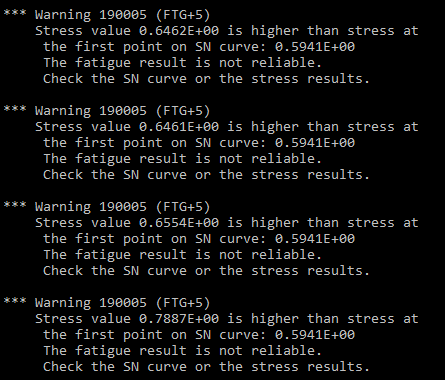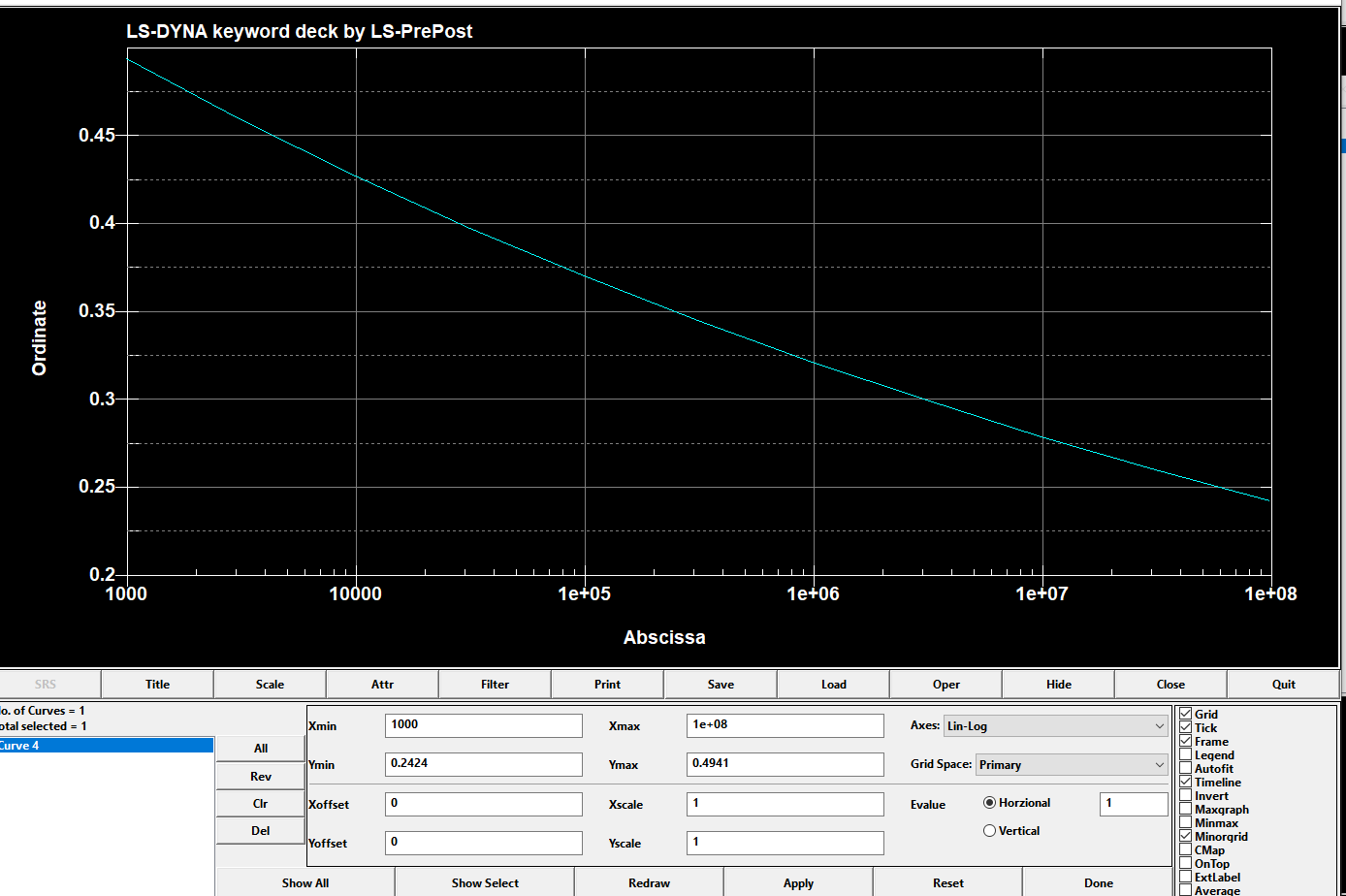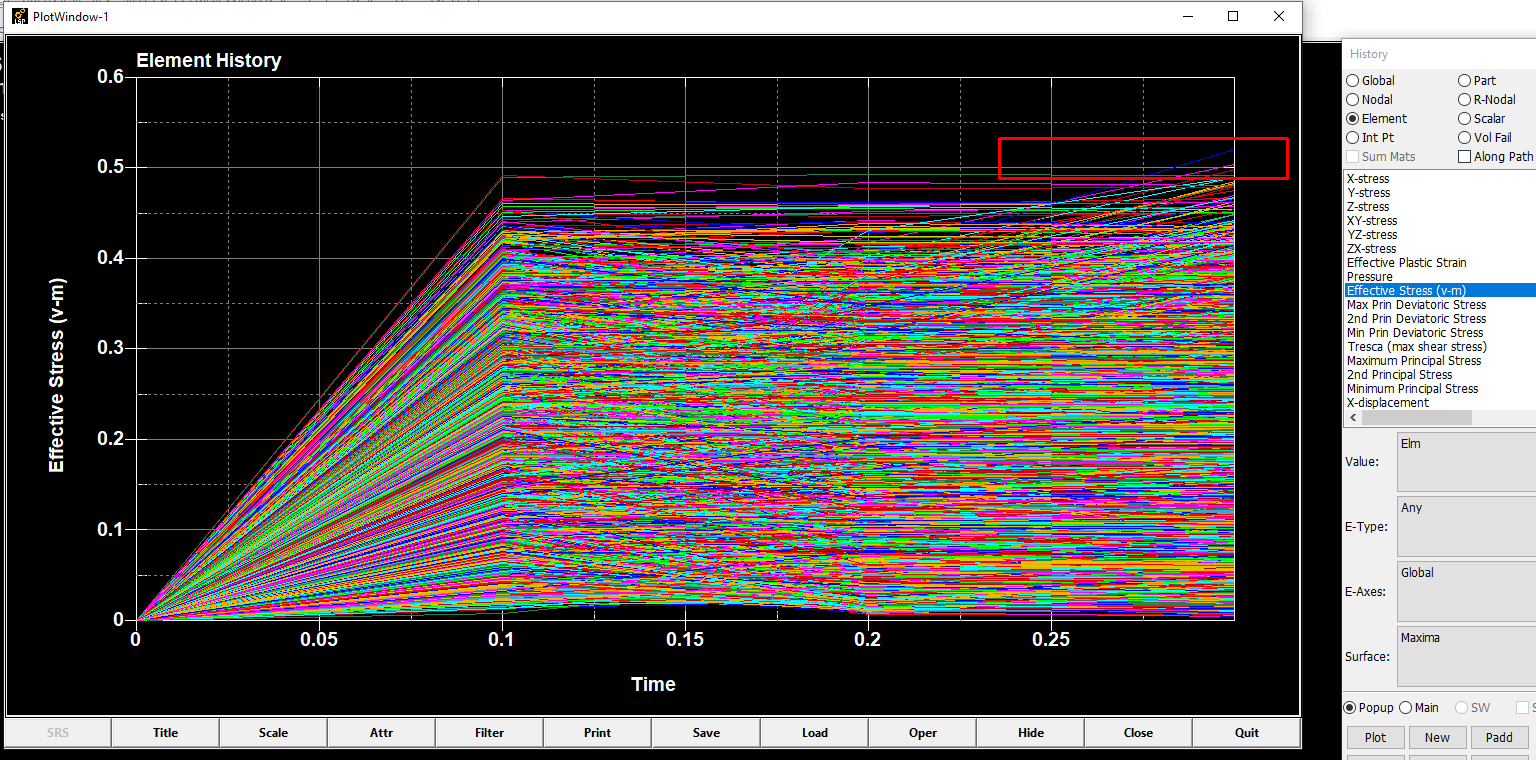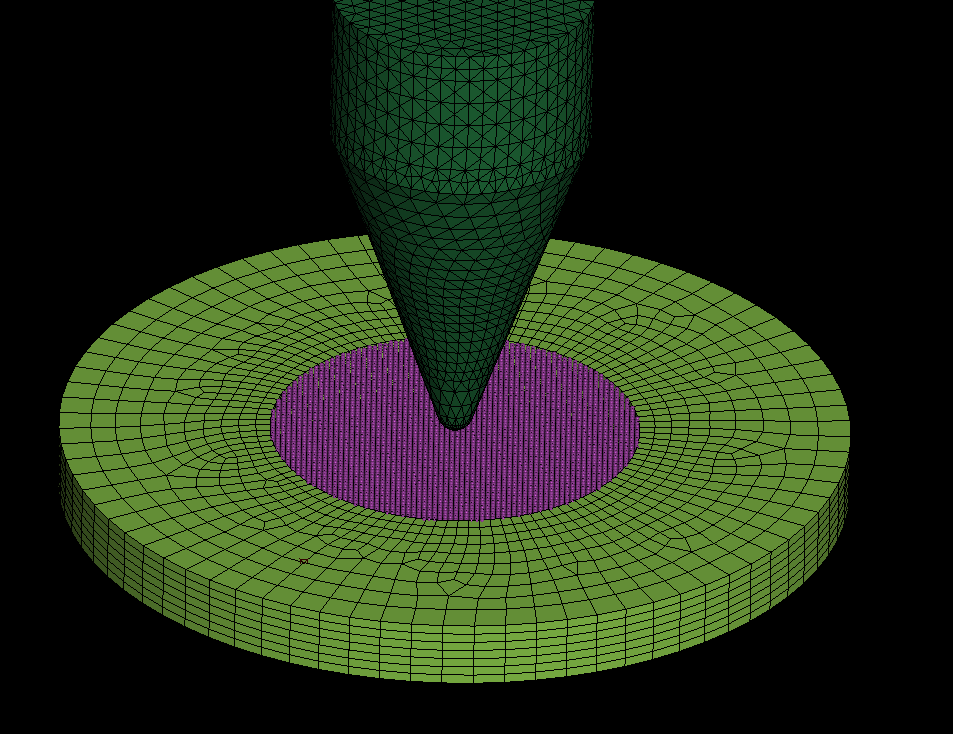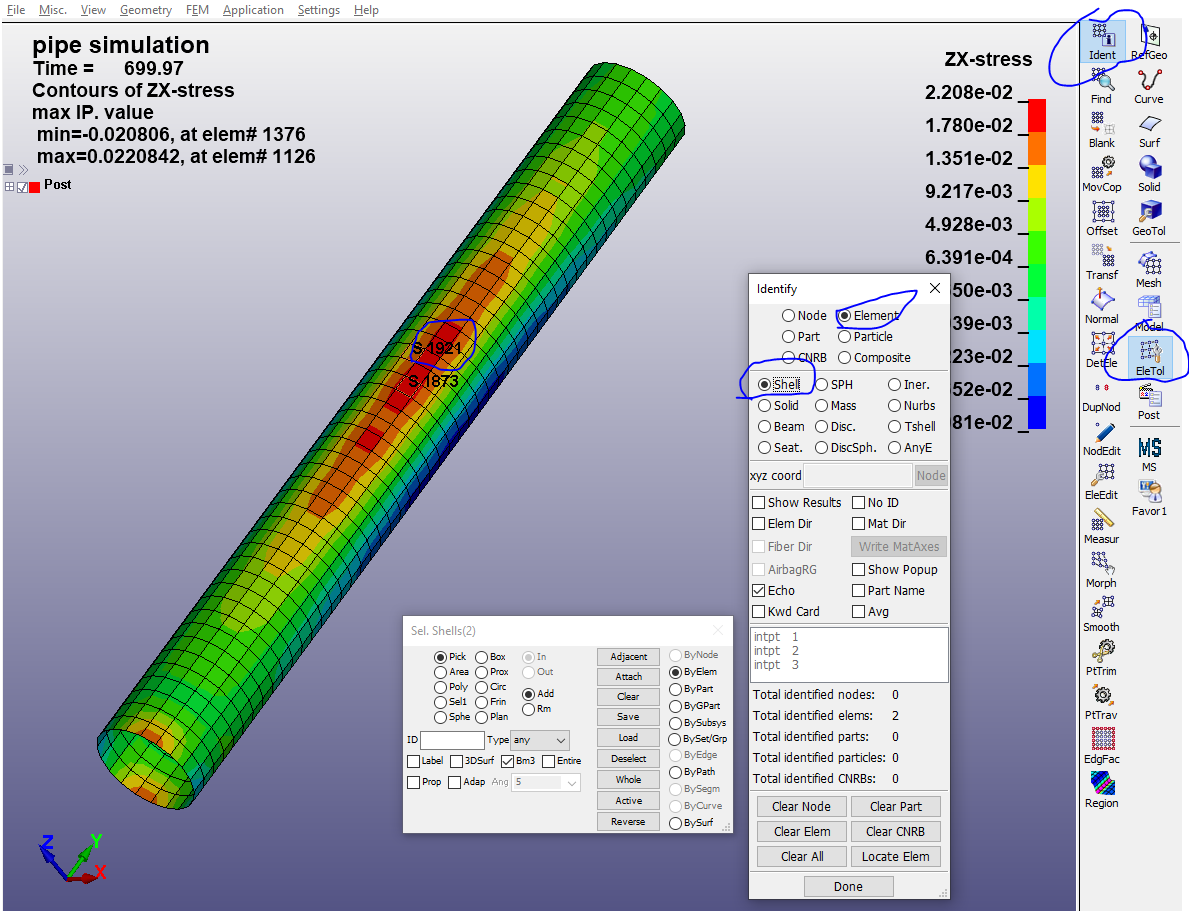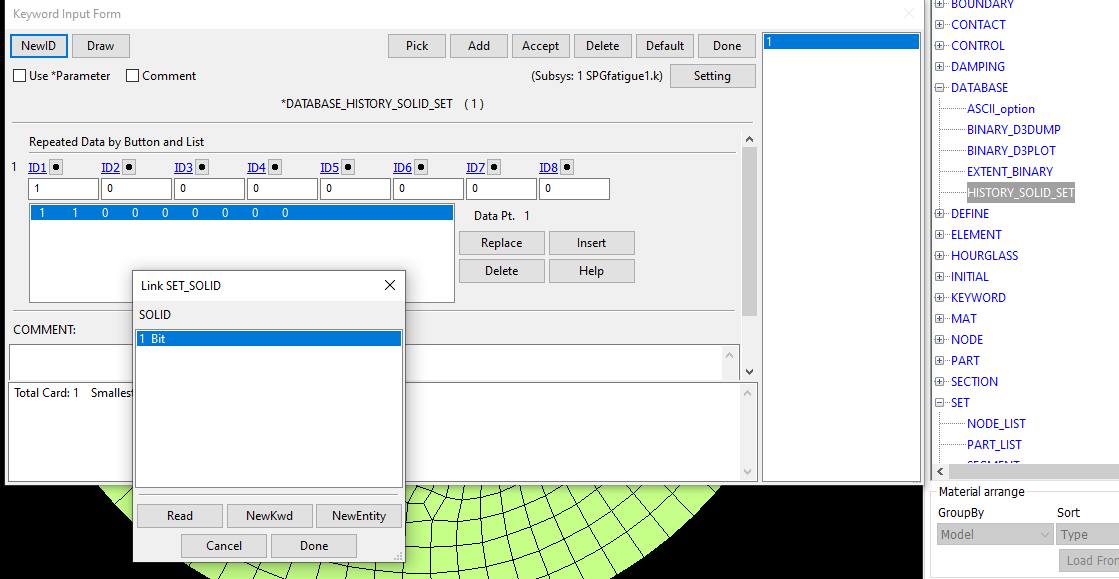-
-
November 3, 2023 at 3:53 pm
javat33489
SubscriberHi all.
I have a question about the binot file that I receive when writing to the DATABASE_ELOUT database.
So, in order:
1.I receive a stress record in the Elout file when the DATABASE_ELOUT card is enabled.
2.At the same time, a binout file is created.
3.I add fatigue maps to the calculation and connect the binot file there.
4. I repeat the calculation, but I get errors on the SN curve:
Curve:
If I change the SN curve and raise the first point higher, the error still remains but with greater stress.
I understand that I have a singularity that is constantly growing and does not allow me to pass.
These are several nodes, I need to somehow cut them off. How can I do it? Is it possible to regularize loads?
What should I do? Thank you.
-
November 12, 2023 at 6:19 pm
javat33489
SubscriberHELP PLEASE
-
November 13, 2023 at 8:50 am
Ashish Khemka
Forum ModeratorHi,
Do you have singularity in the model? If yes then try geometry modification. Please comment further if that is not the case.
Regards,
Ashish Khemka
-
November 13, 2023 at 4:30 pm
-
November 19, 2023 at 4:04 pm
javat33489
SubscriberHelp guys
-
November 19, 2023 at 5:06 pm
Yun Huang
Ansys EmployeeHello, probably there are several elements which show high stress (higher than the stress at the 1st point on the SN curve). Are you using *FATIGUE_ELOUT? Can you remove those elements (not nodes) from *DATABASE_HISTORY_SOLID (or SHELL) and try again? *FATIGUE_ELOUT only computes fatigue damage for the elements included in binout. Thanks.
-
November 19, 2023 at 5:10 pm
javat33489
SubscriberYes, I use FATIGUE_ELOUT.
>>Can you remove those elements
I would remove them, but how would I identify them?
-
November 19, 2023 at 5:13 pm
Yun Huang
Ansys EmployeeOne way is to use d3plot to check the stress fringe plot; Another way is to add *DATABASE_D3MAX and *DATABASE_MAX_SOLID(or SHELL)_SET to get a d3max (accessible by LS-PrePost). Both can help to identify high stress area.
-
November 19, 2023 at 7:21 pm
javat33489
SubscriberThanks for the answer. Yes, I will see the high stress area through the d3plot or use *DATABASE_D3MAX and *DATABASE_MAX_SOLID. It's not a problem.
Once I see these zones, how can I remove elements whose values cause singularity or undue tension?
-
November 20, 2023 at 7:28 pm
javat33489
Subscriber>>Once I see these zones, how can I remove elements whose values cause singularity or undue tension?
-
November 21, 2023 at 8:49 pm
Yun Huang
Ansys EmployeePlease identify the element IDs for the elements in these zones (this can be done with LS-PrePost) and remove those element IDs from *DATABASE_HISTORY_SOLID(or SHELL)_SET. Then those elements will be skipped in fatigue analysis.
-
November 22, 2023 at 4:29 pm
javat33489
SubscriberIn the new version of the prepost, maps *DATABASE_D3MAX and *DATABASE_MAX_SOLID are missing.
1.I can look at stress in a d3plot map, I can build a graph and see elements that show high stress. But how to identify their number? I could use the ident button but it is also not in the new version of the prepost. Please show me on a screenshot how to do this or explain in more detail?
2.When I identify these elements. How can I remove them from the *DATABASE_HISTORY_SOLID_SET card?
This map contains information by solids, not by elements.
Explain everything in more detail please. Thank you.
-
November 30, 2023 at 10:55 pm
Yun Huang
Ansys EmployeeHi, to get the ID of the nodes or elements, one can use LS-PrePOST like below.
go to "EleTol" and choose "Ident", then in "Identify" pick "Element", and then "Shell" (or any other element type that you are interested). Then click any element in the model, the ID of the element will pop up.
To remove elements from *DATABASE_HISTORY_SOLID_SET, one can edit the keyword file using "vi" or "notepad". 1) find *DATABASE_HISTORY_SOLID_SET. 2) Remove those element IDs under *DATABASE_HISTORY_SOLID_SET and 3) save the keyword file.
If you need further help, can you please send email to lstsupport@ansys.com? This can guarantee that each question or support need is tracked and is answered in time. Thanks.
-
December 1, 2023 at 4:21 pm
javat33489
Subscriber>>go to "EleTol" and choose "Ident", then in "Identify" pick "Element", and then "Shell" (or any other element type that you are interested). Then click any element in the model, the ID of the element will pop up.
Okay, I got that.
But how can you remove elements from *DATABASE_HISTORY_SOLID_SET? This map contains information about the solids. Maybe you made a typo Sir?
-
December 1, 2023 at 5:43 pm
Yun Huang
Ansys EmployeeYes, I had a typo. We should remove the element IDs from *SET_SOLID, not from *DATABASE_HISTORY_SOLID_SET.
-
December 1, 2023 at 6:51 pm
javat33489
SubscriberSir, I read in one article that unnecessary elements can be removed using MAT_ADD_EROSION. By setting there a stress value above which elements will be deleted. Do you know how to do this? Can you tell me?
-
November 26, 2023 at 6:45 pm
javat33489
SubscriberI need HELP
-
-
-
November 17, 2023 at 7:58 pm
javat33489
SubscriberHelp please! -
November 28, 2023 at 4:14 pm
javat33489
SubscriberI really need help
-
January 4, 2024 at 2:36 pm
javat33489
SubscriberI need help
-
- The topic ‘Error with SN curve’ is closed to new replies.



-
4597
-
1495
-
1386
-
1209
-
1021

© 2025 Copyright ANSYS, Inc. All rights reserved.

